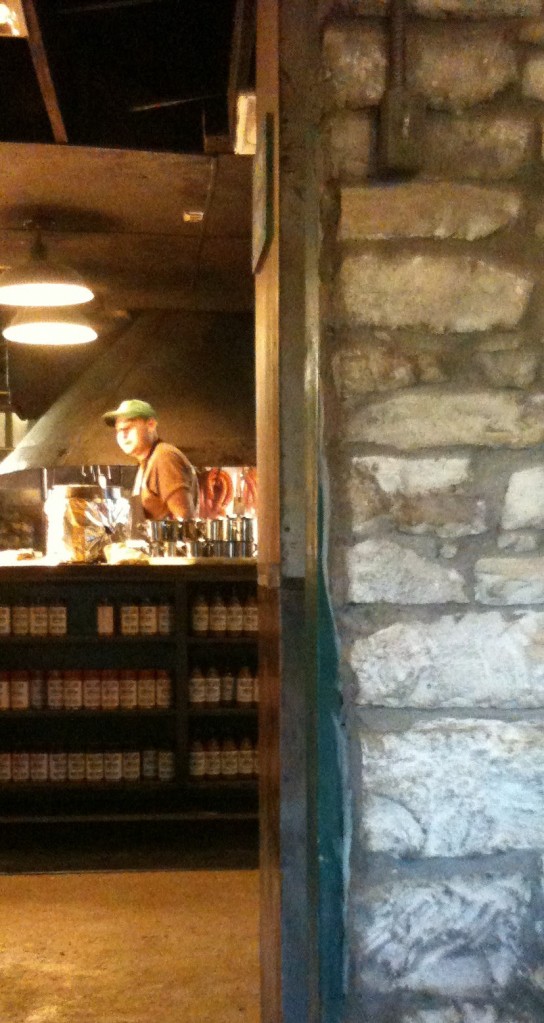-
A loving look at the TFC. I’m looking forward to our next appearance. I won’t be singing in the season opener but will be there for Stravinsky and Mozart later in July.
Month: May 2010
Late May afternoon
Glee Club history: Student leaders of the early 20th century
Thanks to Google, the UVA library, and other online resources there is now a wealth of information available about the early 20th century at the University of Virginia–so much so that we can start to trace the history of individual student leaders of the Virginia Glee Club, not just the group’s directors. Two examples stand out from the Glee Club of the period from 1910 to 1920–Malcolm W. Gannaway and DeLos Thomas, Jr.
Malcolm W. Gannaway bears the unique distinction of having been president of the Virginia Glee Club twice, in discontinuous years. He was there in 1910-1911, when the Club reformed under the direction of M. S. Remsburg, and graduated in 1911. He seems to have been not just a leader but also quite a fine singer, having been tapped to sing at Baccalaurate in June 1911. Leaving for a fellowship at Harvard, he picked up a Masters there, but seems to have been unable to escape the gravitational pull of Mr. Jefferson’s University. He returned to UVa as a summer session instructor for the years 1912-1914, then enrolled as a law student. While he was there, the Glee Club reformed again under the leadership of A. L. Hall-Quest, and Gannaway apparently stepped up again as president.
DeLos Thomas, Jr. was never president of the Glee Club, but was present as an officer in the pivotal 1915-1916 and 1916-1917 seasons when the Club got back on its feet for good after a spotty existence in the early part of the century. Thomas served as secretary and treasurer under Gannaway’s leadership in 1915-1916 and went on to serve as vice-president in 1916-1917. Then the Great War happened, and Thomas joined the Navy, eventually becoming an aviator. He was still flying at the end of the war, when he led a squadron that helped to prove the efficacy of aerial bombardment as an anti-submarine defense. Quite effectively, too: his squad was to have been the first of three to attempt to sink a captured U-boat, but the following squads never got a chance to attack it as the U-boat sank after being hit with only about a dozen bombs. Thomas’s story sadly ends in tragedy, as his aircraft disappeared on a flight back from Bimini in 1923.
Au revoir, pendulum
Make mine an Emmy
-
MAKE: TV was nominated for an Emmy, up against Martha Stewart. My money is on JP.
Free Siberry
-
Wow. There was a moment where Jane Siberry was about the most spectacular voice I had ever heard. Think I need to explore some of the back catalog.
x64 debugging
-
Insight into debugging x64 code. Might come in handy.
Grab bag: Wacky programming tricks
-
I think they forgot to open up the blog post with “Cross-site scripting, I’ma let you finish, but …” Seriously, the Veracode State of Software Security report found that XSS was more prevalent in web applications by a wide margin, both in terms of raw flaw count and applications affected by one or more instances of the flaw.
-
Programming an Apple //e through the audio interface by playing the original cassette tape back through the iPad audio interface. Wow.
-
Open source tool to audit compiled software. Rather than doing full on data and control flow modeling, it looks to see if object code resulted from the compilation of specified source code. Could be a good competitor for BlackDuck.
Super powered breadcrumbs
-
Nice approach to combining navigation and “where am I” in UI design.
Grab bag: some history and geography of appsec
-
Interesting article about the evolution of the buffer overflow market. The Wintel platform’s (x86 + Windows) attractiveness to developers appears to have not done it any favors when it came to the evolution of buffer overflow exploits.
-
Interesting findings about relative platform security. This sort of report is always subject to sampling biases but some of the findings (the relative insecurity of Perl, ColdFusion, plain-vanilla JSP, and PHP websites) ring true.
Grab bag: conjoint, convicted coder
-
Nice introduction to one of the more conceptually rigorous concepts in product design.
-
The long, strange journey of Stephen Watt.
Information asymmetry
-
Pandora’s briefcase, or an extended argument on the perils of information asymmetry. Good WWII spycraft read from Gladwell.
Ransom note exploits
-
Even in OSes with fully randomized address spaces and data execution protection, you can use return oriented programming to patch together malicious code from sequences of instructions that are in memory from common executables (“ransom note exploits”). The lesson: shift the game from focusing on injection vulnerabilities to minimizing the damage an attacker can cause. One of the best papers from SOURCE: Boston in 2010.
At the Salt Lick, Driftwood, TX
At the urging of about six Facebook friends, I make the pilgrimage from downtown Austin, where I am on travel for a few days, to Driftwood, Texas, tonight to visit the Salt Lick. It’s a barbecue joint that’s been around for about 43 years. As these things go, it’s commercialized and simple at the same time. Commercialized: mail order menus sit on the table; jars of the sauce line the entrance; there’s a separate function building. Simple: Four meats (brisket, sausage, pork ribs, turkey), three sides (potato salad, cole slaw, baked beans) that all come at once, free “condiments” (pickles, raw onion, white bread), pie, and soft drinks. (Driftwood is in a dry county, but they allow BYOB; I decide not to B my own B, since I have a 25 mile drive each way.)
I order a plate of brisket and sausage and an iced tea, and wait at an otherwise empty table.
The table in front of me is discussing old Texas home construction. “There would be a place in the parlor where you would have the viewings. With a stained glass window. Now it’s just a window seat, but then they assumed you would be hosting a wake. I remember two occasions where they had to open up the windows to get the casket out.” Behind me, a different technology: “So I had to convince them to take our quarter micron process and adapt it to the 3.3v work.”
Of course, Texas is, in terms of high tech, a hardware state. (What else?)
I sit thinking about old technology: cooking meat in smoke.
The food: Brisket is absolutely lean and supple. The sausage is saucy: well spiced, juicy, flavorful. The pecan pie is an inch of custard with a single layer of pecans on top–not at all my grandmother’s recipe–but the pecans are completely evocative of autumn nights with a nutcracker at the dining room table over a layer of newspaper.
As I stand to leave, I get the salty tangy burning in the eyes of the woodsmoke. It conjures other fires, and other cuts of meat with perfect pink rings from the smoke: 12 Bones in Asheville, Big Jim’s in Charlottesville, Dixie’s in Bellevue, WA, Three Pigs in McLean, and of course Pierce’s Pitt Bar-B-Q south of Williamsburg.
And even though I am full to bursting, it all makes me homesick for Carolina pulled pork in a bun.


